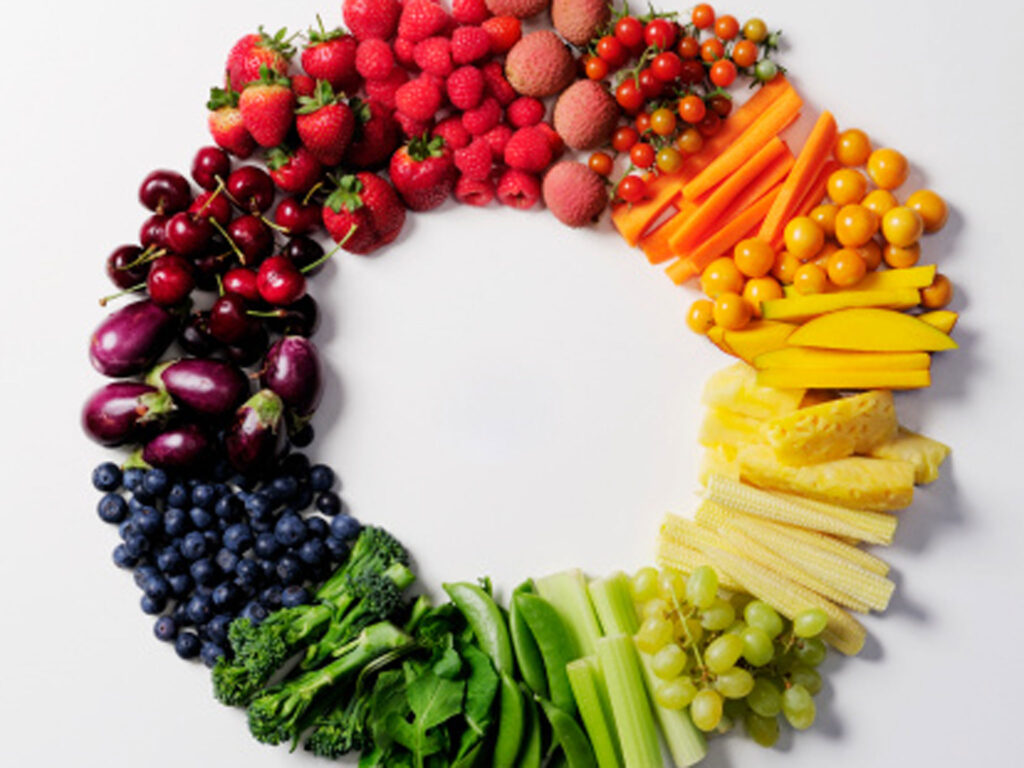Food Variety Challenge

You might hear “eat a variety of foods for good health,” but what does that really mean? When looking to eat a variety, we want to focus on mixing up the plant foods that you eat on a weekly basis. We are looking for not only types of plants, but also different colors.
This allows us to get a broad mix of nutrients from our food: vitamins, minerals, and “phytonutrients,” or compounds that can only come from the plant foods themselves and that can help our bodies clean up cellular damage, eradicate cancerous cells, support the immune system, and promote the health of various tissues throughout the body.
The types of foods we are looking to emphasize include fruits and vegetables, leafy greens, herbs and spices, beans, nuts and seeds, whole grains (if included in your diet), and cold pressed, unrefined or minimally refined oils (including olive, avocado, coconut, walnut, macadamia, and sesame oils).
Sometimes we may not like a new food that we try. That’s ok! Don’t give up on it! Sometimes we need to try a new food 12-15 times before we develop a taste for it (this goes for adults and kids alike!). This can take a couple months. Consider trying food raw instead of cooked, or preparing the food in a different way, or with a flavorful sauce initially to gain a taste for the new food. Here are some fun ways to increase your variety of these foods:
❖ At the grocery store, try to buy 1 fruit and 1 vegetable in each color of the rainbow for the week.
❖ Choose a fruit or vegetable that you have never eaten before, and Google recipes for it. Pro tip: for nearly any vegetable (except lettuce and avocado), it can likely be washed, chopped, tossed with olive oil + salt, and baked at 350*F (180*C) until you can pierce it with a fork.
❖ Consider making a vegetable soup, stir fry, or salad that has at least 6 types of vegetables in it to get great variety in one sitting. Good vegetables for all of these dishes include onions (red and white), garlic, carrots, celery, bell peppers, cabbage (red and green), beans (garbanzo, black, cannellini, pinto, red kidney, etc.), string beans, zucchini, tomatoes, cauliflower, sturdy leafy greens (e.g. kale, spinach, arugula, chard), and cooked winter squash.
❖ Consider having a dip alongside chopped vegetables for a snack – guacamole, hummus, and black bean dip are some favorites.
❖ Toss some chopped herbs onto your dishes for added flavor. These are especially abundant in the summer months. Consider fresh herbs such as parsley, cilantro, basil, mint, dill, oregano, and chives. Or cook with them. Great herbs to throw into a soup or roasting meat include sage, thyme, bay leaves (remove after cooking), and rosemary. Garlic and ginger are other excellent, easy to find additions, both raw or cooked.
❖ Make a rainbow fruit salad with seasonal ingredients in the summer – grapes, various melons, kiwi, apples, oranges, mango, papaya, lemon juice, shredded coconut, and fresh torn peppermint leaves can all be delicious additions.
❖ Aim for mixes of nuts and seeds instead of single types of nuts for the week. Bulk bins at a local grocery store can be very helpful in finding a broad variety. Consider including almonds, walnuts, pecans, cashews, Brazil nuts, pumpkin seeds, and sunflower seeds. Hemp hearts, freshly ground flaxseeds, chia seeds, and sesame seeds can be mixed together as a topping for yogurt or salad.
❖ When cooking grains such as steel cut oatmeal, consider adding millet seed, chia seeds, or hemp hearts to your pot. You may need to add a splash of extra liquid to make sure it cooks adequately.
❖ Homemade salad dressing can be an easy way to incorporate a healthy oil such as olive or walnut, in combination with lemon juice, herbs or spices, and some mustard
